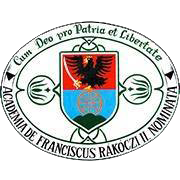Будь ласка, використовуйте цей ідентифікатор, щоб цитувати або посилатися на цей матеріал:
https://dspace.kmf.uz.ua/jspui/handle/123456789/3731| Назва: | The economic meaning and identification of intangible assets for accounting purposes |
| Інші назви: | Az immateriális javak gazdasági tartalma és számviteli célú azonosítása Економічне значення та визначення нематеріальних активів для цілей бухгалтерського обліку |
| Автори: | Poyda-Nosyk Nina Pojda-Noszik Nina Пойда-Носик Ніна Kóródi Patrícia Patricia Korodi Ковроді Патріція |
| Ключові слова: | economic;accounting |
| Дата публікації: | 2024 |
| Видавництво: | II. RFKMF |
| Вид документа: | dc.type.extendedAbstract |
| Бібліографічний опис: | In Csernicskó István et al. (szerk. biz.): Digitális gazdaság és fenntartható fejlődés: a pénzügy, számvitel, menedzsment, valamint társadalom- és viselkedéstudomány legújabb trendjei. II. Rákóczi Ferenc Kárpátaljai Magyar Főiskola által a "Rákóczi-napok" alkalmából rendezett IV. Nemzetközi Gazdaságtudományi Konferencia tudományos anyagai (Beregszász, 2024. március 26-27.). Beregszász, II. RFKMF, 2024. pp. 204-206. |
| Короткий огляд (реферат): | Abstract. Intangible assets are discernible non-financial assets that cannot be physically grasped. In corporate settings, various approaches exist for accounting for intangible assets in double-entry accounting. Consider trademarks, for instance, which hold a comparable value within the overall capital of their proprietors. As per economic theories, the categorical nature of these assets is restricted, requiring examination from a different perspective if there are changes in the financial-economic system. According to established principles, the construction of intangible assets involves detailing the produced assets and describing the amortization process. The absence of clear guidance has a detrimental impact on the development of objective methods, complicating the treatment and retrieval of information. It is worth mentioning goodwill or intellectual capital through which «intangible economic resources in the synthesized expression are represented in economic theories (paradigms) and the structure of which in turn is formed by human, structural and consumer (client) capital» [1, p.79]. |
| URI (Уніфікований ідентифікатор ресурсу): | https://dspace.kmf.uz.ua/jspui/handle/123456789/3731 |
| ISBN: | 978-617-8276-91-1 |
| metadata.dc.rights.uri: | http://creativecommons.org/licenses/by-nc-nd/3.0/us/ |
| Розташовується у зібраннях: | Digitális gazdaság és fenntartható fejlődés: a pénzügy, számvitel, menedzsment, valamint társadalom- és viselkedéstudomány legújabb trendjei Pojda-Noszik Nina |
Файли цього матеріалу:
| Файл | Опис | Розмір | Формат | |
|---|---|---|---|---|
| Poyda_Nosyk_N_Korodi_The_economic_meaning_and_identification_2024.pdf | In Csernicskó István et al. (szerk. biz.): Digitális gazdaság és fenntartható fejlődés: a pénzügy, számvitel, menedzsment, valamint társadalom- és viselkedéstudomány legújabb trendjei. II. Rákóczi Ferenc Kárpátaljai Magyar Főiskola által a "Rákóczi-napok" alkalmából rendezett IV. Nemzetközi Gazdaságtudományi Konferencia tudományos anyagai (Beregszász, 2024. március 26-27.). Beregszász, II. RFKMF, 2024. pp. 204-206. | 1.61 MB | Adobe PDF | Переглянути/Відкрити |
Ліцензія на матеріал: Ліцензія Creative Commons





